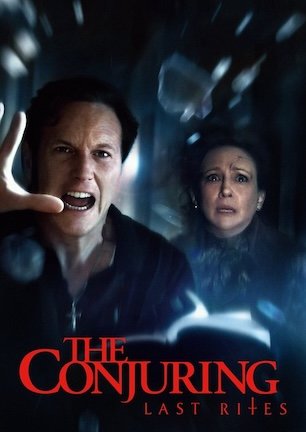Studio: Fox Searchlight
Director: Guillermo del Toro
Writer: Guillermo del Toro, Vanessa Taylor
Producer: J. Miles Dale, Guillermo del Toro
Stars: Sally Hawkins, Michael Shannon, Richard Jenkins, Doug Jones, Michael Stuhlbarg, Octavia Spencer, Nick Searcy, David Hewlett
Review Score:
Summary:
A lonely custodian falls in love with an amphibious creature held captive in a secret government laboratory.
Review:
“The Shape of Water” plants itself in Baltimore during 1962. Yet in much the same way that the movie blends multiple genres including romance, horror, drama, and fantasy, varying tones blend for an atmospheric potpourri defying compartmentalization. The result, as if anyone would expect anything less from filmmaker Guillermo del Toro, yields a unique experience whose ability to stroke individual touchstones through universal themes transcends any singular time, location, or perspective.
Perhaps such a sentiment sounds like pompously pretentious praise. But “The Shape of Water’s” carefully crafted texture swims in imaginative poeticism, taking both heart and mind to places where what you want to say about it can’t help but be birthed in lyrical language. The movie figuratively and literally sings, dances, and inspires. The effect the film has in turn demands watching it, weighing it, and wondering about it in big and bold concepts because its small story is equally big and bold, existing in a corner of cinema virtually all its own.
Elisa hides in plain sight within the hustle-bustle of a noisy world without a moment to pay her much mind. A mute, marginalized woman in male-dominated space, Elisa spends days dotting her regular routine with idle fantasy and nights cleaning up the floors of a classified research facility.
The shackled Amphibian Man recently brought to the underground lab enjoys no such luxury of living unnoticed. However, his secretive status holds him hostage in a tangible prison where solitude takes a more traditional form. As inverse reflections of one another, his and Elisa’s similarly afflicted identities are destined to intertwine in a star-crossed romance the likes of which Shakespeare could never conceive.
Also on a collision course are an altruistic scientist and a grim G-man overseeing the creature’s uncomfortable captivity. Dr. Hoffstetler has no chance of swaying Strickland’s unwavering position on ruling the Amphibian Man with an iron fist. Elisa’s kindly neighbor Giles and concerned coworker Zelda have similarly little hope of convincing her that an interspecies relationship poses problems on more than one level. When a gruff general gives an order to dissect the aquatic alien, everyone’s accelerated agendas jump tracks on journeys leading headfirst into each other at full speed.
“The Shape of Water” represents the pinnacle, currently, of Guillermo del Toro’s trajectory as an ever-evolving cinematic storyteller. Pieces of each of his preceding projects can be seen somewhere within the present film, with those pieces being more confident, more colorful, more forceful, and more purposefully united in a common cause to invoke entertainment, adventure, astonishment, and empathy.
The subterranean spooks of “Mimic.” The contemporary fairy tale feel of “Pan’s Labyrinth.” The period piece flair of “Hellboy.” The gothic grandeur of “Crimson Peak.” Del Toro’s visual vocabulary, fascination with flipping human/monster relationship dynamics, and desire to explore reality through a fantastical lens have progressed to precise points enabling him to tell this peculiar tale in a particular manner. Not to be reductively dismissive of his résumé, but viewed within del Toro’s overall body of work, “The Shape of Water” delivers a sense that all roads have deliberately led here.
Part of why “The Shape of Water” presents GDT at his filmmaking peak has to with his collaborators hitting professional peaks as well. This is certainly the case with previous partners including costume designer Luis Sequeira and cinematographer Dan Lustsen. But it is especially true of the complete cast, whose individual careers collectively contribute to this zeitgeist.
Michael Shannon lathers a shiny coat of reptilian sleaze over Strickland’s huffing and puffing powder keg personality using every swatch from the kooky confidence of “Elvis & Nixon” to the villainy of General Zod to the dogged persistence presented in “Boardwalk Empire” and “Premium Rush.” Giles shows Richard Jenkins summoning his stoic father figure from “Six Feet Under,” deceptively cunning comic relief from “Bone Tomahawk” (review score), even aged man fighting the flow of a life slipping away in “Friends with Benefits.” Zelda similarly becomes the ‘empowered woman before her time’ figure that she is because of what Octavia Spencer brings to the character from “The Help” and “Hidden Figures.”
Shades of Sy Feltz and Arnold Rothstein are seen in Michael Stuhlbarg’s Hoffstetler. Doug Jones, as usual, is more than a ‘man in a suit’ performer, motivating animalistic mannerisms with a humanistic heart. Nick Searcy makes a case to edge out Glenn Morshower as the go-to choice for a no-nonsense military man with a drawl. Sally Hawkins easily emerges as a standout star. No one else could play these people the same way, and they are who they are because of what each performer’s persona contributes to these roles.
“The Shape of Water” contains layers impossible to cover within the confines of a regular review with only a few hours to process the film’s complete contents. Subtext can almost certainly be found by paralleling Elisa’s transformative experience against the reattached finger rebellion suffered by Strickland’s body. Fiction can simultaneously be set aside in favor of tackling the movie’s topical takes on racial tension, oppression, sexuality, and advancing social norms.
Running over two hours in length, “The Shape of Water” doesn’t consistently make effective use of its time. Every moment Strickland spends in a Cadillac showroom says something about him, but how much is new information? Could we get the gist of Giles’ feelings of failure without repeated visits to the advertising agent who can’t outright tell him to take a hike?
It wouldn’t be a shock to learn David Hewlett’s inclusion as a displaced security chief plays a bigger part in deleted scenes than it does in the final film. Editing warts are hard to see, though it is evident that the movie underwent some snipping, and might have minded to keep the scissors out a little longer.
Still, nearly nothing in the movie is included on accident, even if its purpose doesn’t poke immediately through. Narrative reasons naturally exist for Giles to be a gay artist or for Zelda to have an inattentive husband. Strickland’s cattle prod, Elisa’s hardboiled eggs, and her apartment’s calendar fulfill symbolically important purposes beyond being momentary props.
Even naming the research facility Occam plays a significant role by intentionally alluding to the popular philosophy principle. Occam’s razor contends that the simpler of two explanations usually makes the most sense, which certainly applies to any questions presented by the film. Where does the Amphibian Man come from? What about Elisa? How can these two physically different beings possibly interact? Ultimately, the answer simply comes down to love. Their love for each other, as well as Guillermo del Toro’s love for life presented through our culture’s shared love of cinema. All of this endearment combines to make “The Shape of Water” the most improbably romantic monster movie anyone will ever see.
Review Score: 80






Although it leaps off a compelling springboard, “The Carpenter’s Son” lands in a shallow pool in search of more commanding material.